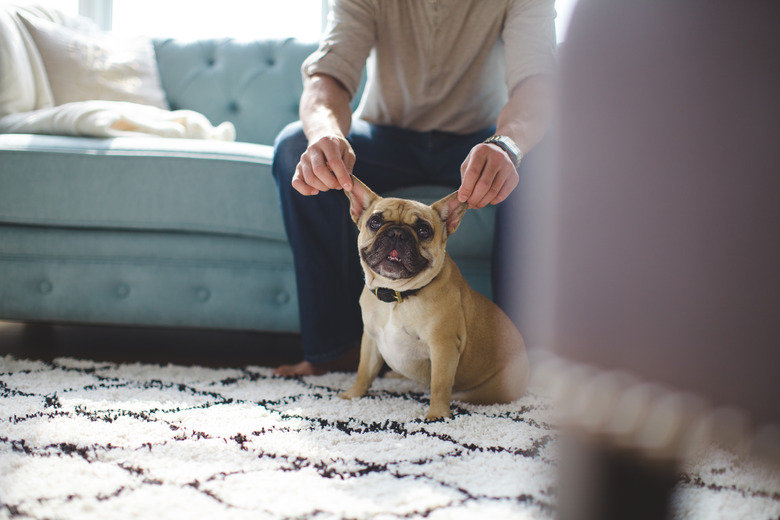Using Monistat For Yeast Infection In Dogs Ears
We may receive a commission on purchases made from links.
If your dog is scratching at his ears or shaking his head more than usual, you likely have an ear infection on your hands. Ear infections can sometimes be caused by parasites like ear mites, or it could be that some moisture got trapped inside his ear canal, which is especially common among floppy-eared breeds.
Sometimes, this moisture can lead to an overgrowth of fungus, which is also known as a yeast infection. Prescription treatments are available from a veterinarian, but what about a dog ear yeast infection home remedy? If Monistat works on yeast infections in humans, could it work on a dog's ears too?
What is a yeast infection?
What is a yeast infection?
A yeast infection is a condition that occurs when too much fungus becomes overgrown in an area, according to PetMD. Dogs typically experience yeast infections on their skin, paws, between their toes, or inside of their ears. All of these places provide ample conditions for the creation of yeast because they're warm and damp.
Yeast infections usually appear as a pinkish or rust-colored stain on a dog's fur, but can also produce symptoms like greasy fur, scaly skin, or a distinctive odor, commonly known as "Frito paws" among dog owners. When a dog has a yeast infection in his ears, he may be seen scratching his ears, rubbing his head into the carpet, or shaking his head to relieve the itchy, uncomfortable feeling. Fortunately, eliminating a yeast infection in a dog is easy, and you can even find a dog ear infection treatment over the counter in the women's health aisle of most drugstores.
What is Monistat?
What is Monistat?
Monistat is an over-the-counter yeast infection treatment medication. Monistat contains the antifungal drug miconazole and is often used by women to treat vaginal yeast infections. Because the active ingredient is an antifungal medication, however, Monistat can be used to treat any number of fungal infections, including a yeast infection in a dog's ears when administered properly.
Treating yeast infections with Monistat
Treating yeast infections with Monistat
If you are going to use an over-the-counter treatment for your dog, it's always best to consult your veterinarian before administering any medication. However, if getting to the doctor simply isn't possible, Pet Helpful has offered an easy guide to treating a dog's yeast infection with Monistat.
To treat a dog ear yeast infection, Monistat should first be mixed with equal parts hydrocortisone cream in a small dish. The Monistat, or miconazole, will stop the fungus from spreading, while the hydrocortisone will help reduce any itching or inflammation that's irritating your dog. Then, thin the mixture out with a few drops of water and heat everything in a microwave for 15 seconds. Draw the mixture into a syringe and slowly squirt it into your dog's ear, taking care to massage the base of her ear so that the medicine spreads.
You can treat your dog's ear infection this way once a day for about a week, but if symptoms don't seem to be clearing up, be sure to visit your veterinarian for a second look.
Using Vagisil for dogs' ears
Using Vagisil for dogs' ears
Can you use Vagisil for dogs' ears? When shopping for a yeast infection treatment for your dog, you'll want to make sure you have the right product. Vagisil is often mistaken for Monistat as they are both designed to alleviate the uncomfortable symptoms that come with a yeast infection, like itching or inflammation. However, only Monistat will actually stop the growth of fungus. The active ingredient in Vagisil will only provide temporary relief from symptoms and won't actually treat a yeast infection. If you can't find or don't wish to spend the money on the name brand, you can use a generic version of miconazole, which is the name of the active ingredient that works to kill yeast.
Always check with your veterinarian before changing your pet's diet, medication, or physical activity routines. This information is not a substitute for a vet's opinion.
